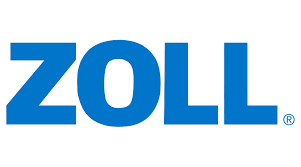What is an AED Machine? How Does It Work?
What is an AED Machine?
An AED, or Automated External Defibrillator, is a handheld electronic device designed to diagnose and treat life-threatening cardiac arrhythmias through defibrillation. This device scans the patient's heart rhythm and sends signals to its processor. After analyzing the information, the device may deliver an electric shock to restore a normal heart rhythm.
The Purpose of an AED Machine
An AED is a crucial tool in the process of cardiopulmonary resuscitation (CPR) for victims of cardiac arrest. For a victim of cardiac arrest, the survival rate with CPR alone is around 9%. However, this rate increases to 38% when combined with the use of an AED. The AED is designed to be simple and easy to use, with both audio and visual instructions to guide the user.
When cardiac arrest occurs, a victim's survival rate decreases by 10% with each passing minute. The AED can analyze the victim's heart rhythm and, if necessary, perform defibrillation to restore an effective heart rhythm. Some AED models even provide guidance for performing CPR through voice instructions and visual cues displayed on an LCD screen. In most cases, patients experiencing cardiac arrest outside of a hospital setting require the use of a defibrillator combined with CPR.
How Does an AED Machine Work?
With clear audio and visual instructions, AEDs are designed to be simple and easy for anyone to use. Here’s how to use one:
1. Preparation
AEDs can typically be found in cabinets marked with a heart and lightning bolt symbol. Ensure the victim is not lying on a wet surface or metal before using the AED.
2. Applying AED Pads to the Victim's Chest
Remove any electronic devices like phones or smartwatches from the victim. Expose and dry the victim's chest. Place the AED pads in the correct positions: one pad on the upper right chest just below the collarbone, and the other on the lower left side of the chest. Turn on the device and follow the instructions.
3. Wait for Analysis and Follow Instructions
Ensure no one touches the victim during the analysis. If the shock button, indicated by a lightning bolt (heart and lightning bolt symbol), starts flashing, the victim needs to be shocked. Press the shock button and make sure no one touches the victim during the shock. If the shock button is not flashing, the victim does not need to be shocked. Continue CPR according to the device's instructions.
4. Continue Until the Victim Recovers or Medical Personnel Arrive
The AED is a vital medical device that can help save the life of someone experiencing sudden cardiac arrest due to ventricular fibrillation. The use of AEDs is becoming increasingly common in Vietnam. Everyone should equip themselves with the knowledge of how to use an AED to potentially save a life.
Bình luận:
Không có bình luận nào cho bài viết.
 Tiếng anh
Tiếng anh  Vietnam
Vietnam 




.png)
.png)

